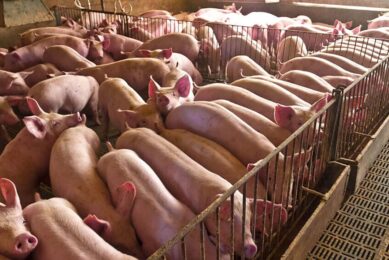US: Feral swine spreading in Ohio

Feral swine – also called feral pigs and feral hogs – have planted their hooves in the state, mainly in the southeastern corner, said Marne Titchenell, wildlife specialist in Ohio State University’s College of Food, Agricultural, and Environmental Sciences.
“They’re highly adaptable and very destructive,” said Titchenell, a co-author of the recently published Ohio State University Extension fact sheet “Feral Swine in Ohio: Managing Damage and Conflicts.” OSU Extension is the college’s statewide outreach arm.
Feral swine can eat and trample crops, can root up lawns and forest plants, and, by their wallowing, can make soils erode and streams turn muddy, said Titchenell, who works in the college’s School of Environment and Natural Resources.
They also can outcompete native wildlife for food, she said. And they can spread some 30 diseases and 37 parasites to livestock, pets and humans. Two of those diseases, swine brucellosis and pseudorabies, are of special concern.
Titchenell said Ohio’s feral swine originated two ways. They escaped from farms or hunting preserves. Or people released them illegally for hunting.
By surviving and spreading, they joined the state’s growing list of invasive species, which include zebra mussels, multicolored Asian lady beetles, and grass, bighead and silver carps. Others, to name a few, arekudzu, hydrilla, emerald ash borers, Asian longhorned beetles and hemlock woolly adelgids.
Invasive species aren’t native to an area but usually have been spread there by human activities, either by accident or intentionally, Titchenell said. They spread quickly and can hurt native species, the environment and the economy.
Billions in costs
Feral swine are already widespread in the southeastern US and parts of the West, according to a University of Georgia report. They cost the US $1.5 billion a year in damage and control costs, the OSU Extension fact sheet says.
In all, invasive species cost the US more than $120 billion a year, a 2007 Cornell University study found.
Ohio’s first feral swine were seen in Vinton County in the 1980s. Reports grew in number through the 1990s and early 2000s. Now, in recent years, “Sightings have increased substantially,” the fact sheet says.
Two agencies – Wildlife Services, part of the U.S. Department of Agriculture’s Animal and Plant Health Inspection Service, and the Ohio Department of Natural Resources’ Division of Wildlife – are working to reduce Ohio’s feral swine numbers through trapping or shooting. Goals include cutting dollar losses from the pigs’ damage and protecting biodiversity.
Ohioans should report any feral swine they see, Titchenell said, either by contacting the Division of Wildlife at 1-800-WILDLIFE or wildinfo@dnr.state.oh.us or by downloading and using the free Great Lakes Early Detection Network app available here.
“Like any invasive species, eradication and management of feral swine can’t happen without public awareness,” she said. “The faster they’re reported in an area, the faster the response will be.”
The fact sheet is free online here go.osu.edu/j6q
Source: The Ohio State University
 Beheer
Beheer


![Photo: [1:20 PM] Vincent ter Beek](https://www.pigprogress.net/app/uploads/2023/12/IMG_3000x2000ASF-Pigcopy-389x260.jpg)





 WP Admin
WP Admin  Bewerk bericht
Bewerk bericht